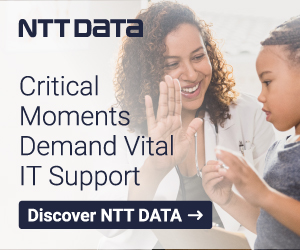By Milad Bahrami
In 2016 I chose to make the move back to the private sector after spending several years as a Federal employee. Up to that point, my entire career had been serving the Federal Government, whether it was working as a Federal consultant, in business development, or as a Federal employee. When I decided I was going to make the leap back into the private sector, I received a lot comments from colleagues, family and friends about how difficult and different life was going to be.
Today, two years into my role leading HHS sales for a product vendor, I’ve had some time to reflect on the many assumptions as I made the shift out of Federal Government. As you read, I think many of you will be surprised to see that I have found more commonalities than differences. These commonalities can serve to drive efficiencies, innovation, and improve information technology in Healthcare if we leverage them.
Work Life Balance
Let’s start with one of the most common misconceptions. Most people believe that all Federal employees work 8 hours a day and get every other Friday off, and the private sector folks are all working 80 hours a week. The second part of that maybe true by the time you incorporate proposals and billable work into the mix, but the first is a bit deceiving.
In my experience, your work/life balance in the Government changes as you progress in your career and responsibilities, just like it does in the private sector. As I grew professionally, and became accountable for more, I noticed that much of the work/life balance that I thought I would always have in the Government was starting to diminish. I had more people to manage, a larger budget, and a greater number of stakeholders that depended on the services that my team provided. On a regular basis, I was working longer days and because of the operational nature of my team, found myself connected to my phone and email 7 days a week. These were mission related systems and keeping the lights on was critical to the organization.
It’s important to keep in mind that there are many people who are passionate about improving Health IT and, along with that passion, comes a commitment to get the job done. That is no less or no more important regardless of which side of the fence you are on. What I’ve come to understand is when the most passionate people in the Government and the private sector work together and truly collaborate, the potential to create efficiencies, innovate and improve access to information, is endless.
Customer Service
Everyone knows the stereotype of the cranky Government bureaucrat transferring you to several different people to get an answer. The perception around customer service is that it only applies to commercial entities and that couldn’t be farther from the truth.
Today, more than ever, Americans have an opportunity to interface with the Government on a regular basis and therefore, many Federal agencies are charged with providing services to their constituents. Just a few examples within HHS are CMS, CDC and the FDA. Federal employees have just as much pressure as their private sector counterparts to meet or exceed Service Level Agreements and increase customer satisfaction. As a result, customer service efforts in the public sector are increasingly being driven by consumer demand for immediate access to services. As customer service becomes more technologically driven, the public sector is just as challenged as the private sector in keeping up.
Bureaucracy
Having spent many years working on both sides of the fence, I have learned one thing very clearly. Bureaucracy is bureaucracy no matter what large organization you work for. If the private organization you work for is a large entity, then you are working through layers of management, processes and procedures to get things approved.
I recently had the experience of working with a systems integrator where it took several weeks to get approval from layers of management that were not engaged with the pursuit charged with deciding to go after an upcoming RFP. This was no different than the many times in Government where I have spent weeks trying to get the wording on a PowerPoint approved to distribute throughout my organization. Whether it is a Federal agency or a large systems integrator, you will have red tape and hoops you have to jump through to gets things accomplished.
Despite the well heeded warnings as I transitioned out of the Federal Government, what I’ve ultimately found is that within Federal Health IT, we are working with more similarities than difference between public and private sectors. I urge both sides of the fence to keep this in mind in during your interactions. The more you understand of your counterpart, the more productive you can be, and the greater chance we have as a community to advance our industry and the critical missions of the agencies we support.
Milad Bahrami is Senior Enterprise Account Executive for the Department of Health and Human Services (HHS) at Pegasystems. He works with executive leaders at HHS to improve IT effectiveness and enterprise-level results, as well as consults and advises the Agency on how it can automate operations and achieve new levels of efficiency and savings.
He is a former Division Director with the National Institutes of Health (NIH) Business Applications Services organization within the Center for Information Technology, a former U.S. Food and Drug Administration (FDA) CDER IPT Manager, and a former Enterprise Reporting Manager with the U.S. Department of Justice.





